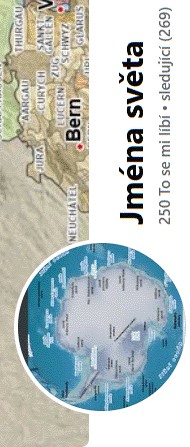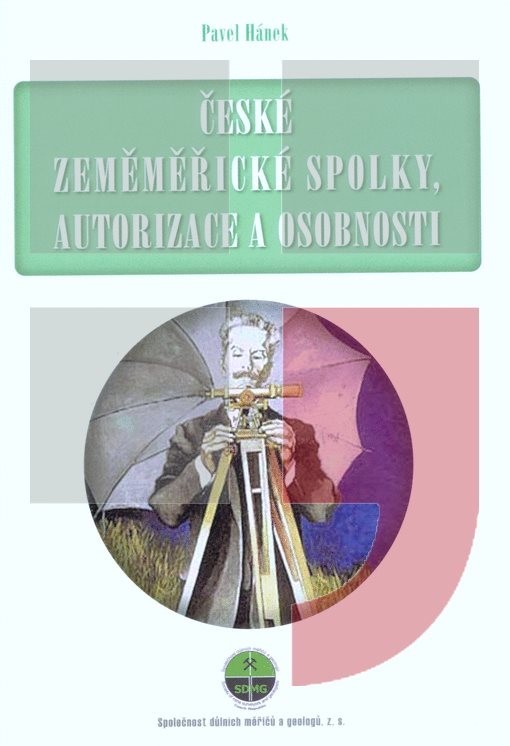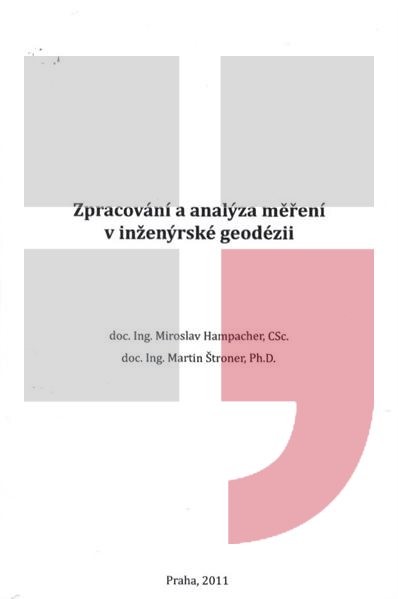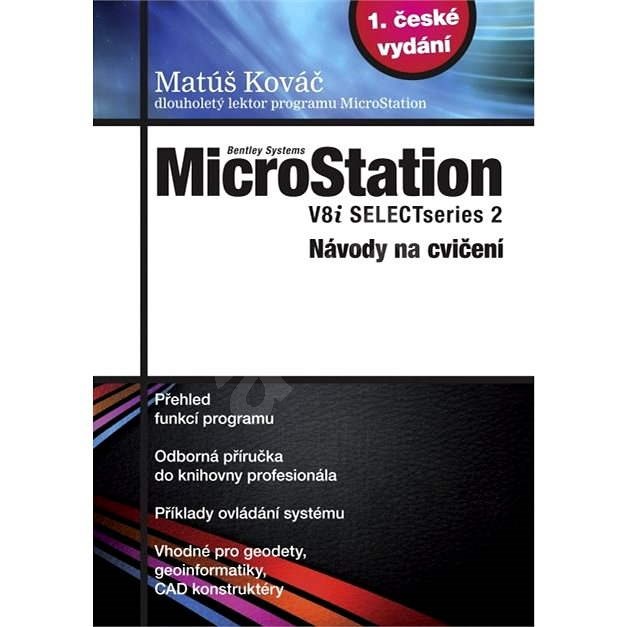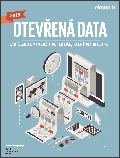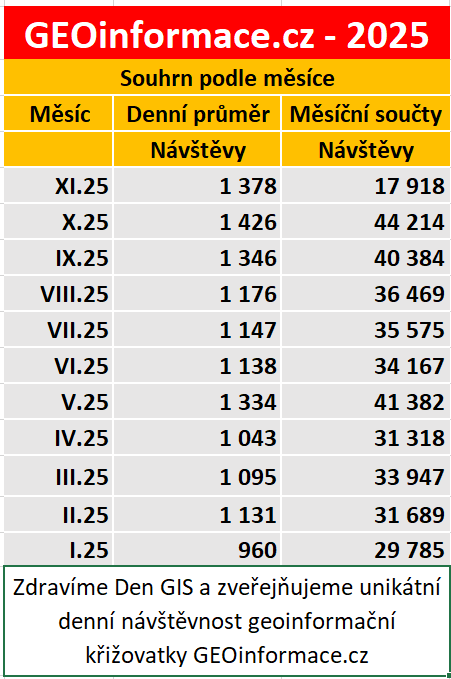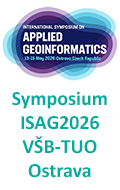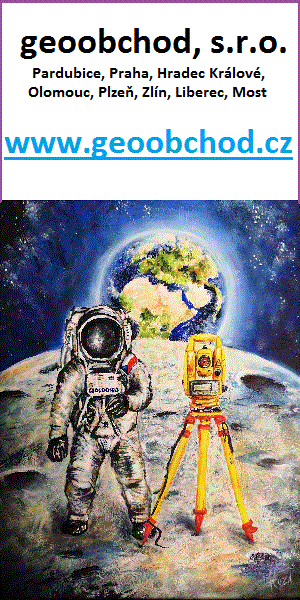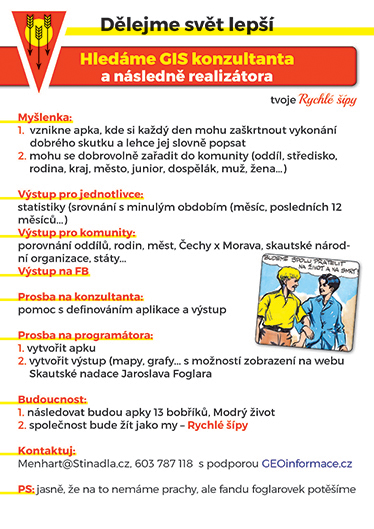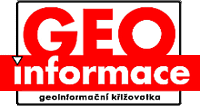zprávy
zdroje zpráv:Inpixon Enhances Enterprise-Class and Social Distancing Features with New Inpixon Mapping Release
3.12.2020 16:37 GISCafe.com Webcasts-Webinars PALO ALTO, Calif. and TORONTO, Dec. 3, 2020 — (PRNewswire) — Inpixon (Nasdaq: INPX), the Indoor Intelligence™ company, today …AUC Woodruff Library Launches Website to Aid Disaster Response Organizations Statewide
3.12.2020 16:37 GISCafe.com Webcasts-Webinars ATLANTA, Dec. 3, 2020 — (PRNewswire) — The Atlanta University Center Robert W. Woodruff Library received a LYRASIS Catalyst Fund …Kespry Announces Winter 2020 Aerial Intelligence Platform Release
3.12.2020 16:37 GISCafe.com Webcasts-Webinars Enhancements represent growth in company's automation, quality and scalabilityMENLO PARK, Calif., Dec. 3, 2020 — (PRNewswire) — …
Shell locks in Bentley for digital contract
3.12.2020 16:37 Bentley SystemsPress Coverage
Oil & Gas Today, ANZ
Read the articleFutureOn secures investment from Bentley
3.12.2020 16:34 Bentley SystemsPress Coverage
Process Technology, ANZ
Read the articleFutureOn secures investment from Bentley Acceleration Fund for O&G Digitalisation
3.12.2020 16:20 Bentley SystemsPress Coverage
Industrial Automation, India
Read the articleShell Deepwater selects Bentleys iTwin Platform for Project Delivery
3.12.2020 16:16 Bentley SystemsPress Coverage
Industrial Automation, India
Read the articleBentley’s digital iTwin open, scalable Azure cloud-based platform for Project Delivery
3.12.2020 15:55 Bentley SystemsPress Coverage
Electronics Media, India
Read the articleGalileo satellites help rescue Vendée Globe yachtsman
3.12.2020 15:44 ESA Navigation
A sailor in the Vendée Globe solo round-the-world yacht race faced disaster in the Southern Ocean as raging waves pounded his vessel apart. But he was saved thanks to the search and rescue antennas aboard Europe’s Galileo satellites, part of the international Cospas-Sarsat rescue system.
Změna úředních hodin
3.12.2020 14:44 ČÚZK - předpisy a opatření Katastrální úřad pro Liberecký kraj - Katastrální pracoviště Semily zveřejnil novou aktualitu: S účinností od 7.12.2020 se úřední hodiny stanovují na:Pondělí: 8:00 - 17:00
Středa : 8:00 - 17:00
Změna úředních hodin
3.12.2020 14:44 ČÚZK - předpisy a opatření Katastrální úřad pro Liberecký kraj - Katastrální pracoviště Semily zveřejnil novou aktualitu: S účinností od 7.12.2020 se úřední hodiny stanovují na:Pondělí: 8:00 - 17:00
Střena : 8:00 - 17:00
Změna úředních hodin
3.12.2020 14:42 ČÚZK - předpisy a opatření Katastrální úřad pro Liberecký kraj - Katastrální pracoviště Liberec zveřejnil novou aktualitu: S účinností od 7.12.2020 se úřední hodiny stanovují na:Pondělí: 8:00 - 17:00
Střena : 8:00 - 17:00
Změna úředních hodin
3.12.2020 14:42 ČÚZK /Urady/Katastralni-urady/Katastralni-urady/Katastralni-urad-pro-Liberecky-kraj/Katastralni-pracoviste/KP-Liberec/O-uradu/Aktuality/Zmena-urednich-hodin-(2)Změna úředních hodin
3.12.2020 14:42 ČÚZK - předpisy a opatření Katastrální úřad pro Liberecký kraj - Katastrální pracoviště Liberec zveřejnil novou aktualitu: S účinností od 7.12.2020 se úřední hodiny stanovují na:Pondělí: 8:00 - 17:00
Středa : 8:00 - 17:00
Změna úředních hodin
3.12.2020 14:41 ČÚZK /Urady/Katastralni-urady/Katastralni-urady/Katastralni-urad-pro-Liberecky-kraj/Katastralni-pracoviste/KP-Jablonec-nad-Nisou/O-uradu/Aktuality/Zmena-urednich-hodin-(1)Změna úředních hodin
3.12.2020 14:41 ČÚZK - předpisy a opatření Katastrální úřad pro Liberecký kraj - Katastrální pracoviště Jablonec nad Nisou zveřejnil novou aktualitu: S účinností od 7.12.2020 se úřední hodiny stanovují na:Pondělí: 8:00 - 17:00
Střena : 8:00 - 17:00
Změna úředních hodin
3.12.2020 14:41 ČÚZK - předpisy a opatření Katastrální úřad pro Liberecký kraj - Katastrální pracoviště Jablonec nad Nisou zveřejnil novou aktualitu: Katastrální úřad pro Liberecký kraj, Katastrální pracoviště Jablonec nad Nisou oznamuje, že od pondělí 12. 4. 2021 se obnovují úřední hodiny platné před vyhlášením nouzového stavu, tedy:pondělí a středa 8:00 - 17:00,
úterý a čtvrtek 8:00 - 14:00,
pátek 8:00 - 12:00.
Změna úředních hodin
3.12.2020 14:41 ČÚZK - předpisy a opatření Katastrální úřad pro Liberecký kraj - Katastrální pracoviště Jablonec nad Nisou zveřejnil novou aktualitu: S účinností od 7.12.2020 se úřední hodiny stanovují na:Pondělí: 8:00 - 17:00
Středa : 8:00 - 17:00
Změna úředních hodin
3.12.2020 14:40 ČÚZK - předpisy a opatření Katastrální úřad pro Liberecký kraj - Katastrální pracoviště Frýdlant zveřejnil novou aktualitu: S účinností od 7.12.2020 se úřední hodiny stanovují na:Pondělí: 8:00 - 17:00
Střena : 8:00 - 17:00
Změna úředních hodin
3.12.2020 14:40 ČÚZK - předpisy a opatření Katastrální úřad pro Liberecký kraj - Katastrální pracoviště Frýdlant zveřejnil novou aktualitu: S účinností od 7.12.2020 se úřední hodiny stanovují na:Pondělí: 8:00 - 17:00
Středa : 8:00 - 17:00
Změna úředních hodin
3.12.2020 14:40 ČÚZK /Urady/Katastralni-urady/Katastralni-urady/Katastralni-urad-pro-Liberecky-kraj/Katastralni-pracoviste/KP-Frydlant/O-uradu/Aktuality/Zmena-urednich-hodinZměna úředních hodin
3.12.2020 14:39 ČÚZK - předpisy a opatření Katastrální úřad pro Liberecký kraj - Katastrální pracoviště Česká Lípa zveřejnil novou aktualitu: S účinností od 7.12.2020 se úřední hodiny stanovují na:Pondělí: 8:00 - 17:00
Středa : 8:00 - 17:00
Změna úředních hodin
3.12.2020 14:39 ČÚZK - předpisy a opatření Katastrální úřad pro Liberecký kraj - Katastrální pracoviště Česká Lípa zveřejnil novou aktualitu: S účinností od 7.12.2020 se úřední hodiny stanovují na:Pondělí: 8:00 - 17:00
Středa : 8:00 - 17:00
Kontakty katastrálního pracoviště jsou zveřjněny na úvodní stránce. Kontakty na zaměstnance pracoviště naleznete ZDE
Děkujeme za pochopení.
Úprava úředních hodin
3.12.2020 14:39 ČÚZK - předpisy a opatření Katastrální úřad pro Liberecký kraj - Katastrální pracoviště Česká Lípa zveřejnil novou aktualitu: S účinností od 15.02.2021 se úřední hodiny stanovují na:Pondělí: 8:00 - 17:00
Středa : 8:00 - 17:00
Kontakty katastrálního pracoviště jsou zveřjněny na úvodní stránce. Kontakty na zaměstnance pracoviště naleznete ZDE
Děkujeme za pochopení.
Změna úředních hodin
3.12.2020 14:39 ČÚZK - předpisy a opatření Katastrální úřad pro Liberecký kraj - Katastrální pracoviště Česká Lípa zveřejnil novou aktualitu: S účinností od 7.12.2020 se úřední hodiny stanovují na:Pondělí: 8:00 - 17:00
Středa : 8:00 - 17:00
V souladu s vládními opatřeními je upřednostňován písemný, elektronický či telefonický kontakt před kontaktem osobním. Za uvedeným účelem žádáme klienty o upřednostnění kontaktu na dálku s využitím datové schránky, e-mailu, telefonu a zejména prostřednictvím sběrného boxu (podrobnosti níže v Aktualitách pracoviště).
Kontakty katastrálního pracoviště jsou zveřjněny na úvodní stránce. Kontakty na zaměstnance pracoviště naleznete ZDE
Děkujeme za pochopení.
Změna úředních hodin
3.12.2020 14:39 ČÚZK - předpisy a opatření Katastrální úřad pro Liberecký kraj - Katastrální pracoviště Česká Lípa zveřejnil novou aktualitu: S účinností od 7.12.2020 se úřední hodiny stanovují na:Pondělí: 8:00 - 17:00
Střena : 8:00 - 17:00
Úprava úředních hodin
3.12.2020 14:39 ČÚZK /Urady/Katastralni-urady/Katastralni-urady/Katastralni-urad-pro-Liberecky-kraj/Katastralni-pracoviste/KP-Ceska-Lipa/O-uradu/Aktuality/Zmena-urednich-hodinZměna úředních hodin
3.12.2020 14:35 ČÚZK - předpisy a opatření Katastrální úřad pro Liberecký kraj zveřejnil novou aktualitu: S účinností od 7.12.2020 se úřední hodiny stanovují na:Pondělí: 8:00 - 17:00
Střena : 8:00 - 17:00
Změna úředních hodin
3.12.2020 14:35 ČÚZK - předpisy a opatření Katastrální úřad pro Liberecký kraj zveřejnil novou aktualitu: S účinností od 12.4.2021 se mění úřední hodiny. Podrobnější informace na stránkách jednotlivých pracovišť.Změna úředních hodin
3.12.2020 14:35 ČÚZK - předpisy a opatření Katastrální úřad pro Liberecký kraj zveřejnil novou aktualitu: S účinností od 7.12.2020 se úřední hodiny stanovují na:Pondělí: 8:00 - 17:00
Středa : 8:00 - 17:00
Změna úředních hodin
3.12.2020 14:35 ČÚZK /Urady/Katastralni-urady/Katastralni-urady/Katastralni-urad-pro-Liberecky-kraj/O-uradu/Aktuality/Zmena-urednich-hodin-(2)International Civil Aviation Organisation approves new Standards and Recommended Practices putting forth the use of EGNOS and Galileo
3.12.2020 14:28 European GNSS Agency
Earlier in November, the International Civil Aviation Organization (ICAO) approved new Standards and Recommended Practices (SARPs) paving the way for the development of new Dual Frequency Multi-Constellation Satellite Based Augmentation Systems (DFMC SBAS).
The ICAO SARPs are technical specifications that constitute the basis for harmonized global aviation safety and efficiency in the air and on the ground. While not legally binding for ICAO Member States, SARPs help standardize functional and performance requirements of air navigation facilities and services and ensure the orderly development of air transport.
Based on analyses, simulations and tests carried out by various organizations around the world, the SARPs on the use and development of DFMC SBAS were validated and approved by the Navigation Systems Panel of the ICAO earlier in November.
"The approval of SARPs is a milestone for EGNOS and Galileo but also for European aviation. Dual Frequency Multi-constellation SBAS will become a key enabler in aviation and provide improved availability, continuity, and accuracy by correcting two frequencies from more than one constellation" says GSA’s Executive Director, Rodrigo da Costa.
"We’re also very proud to have contributed to the standardization, by initiating projects EDG²E and MUGG aimed at prototyping GPS and Galileo SBAS receivers, and already driving the EGNOS programme on its way to implement this new DFMC SBAS standard through the development of EGNOS V3." confirmed Jean-Marc Pieplu, Head of the EGNOS Services Department at the GSA.
Watch This: EGNOS Cases: Lanzarote
DFMC SBAS & aviation: opening up new possibilities for air transportation
With multi-constellation becoming the norm, the GNSS industry is now witnessing a shift towards the adoption of multi-frequency. Four of the global SBAS plan to upgrade their services to support multiple frequency bands and multiple constellations in the years to come.
While the current SBASs can only correct GPS and GLONASS signals, the DFMC SBAS concept will enable signal corrections from multiple GNSS constellations and will have the ability to capture signals from 92 satellites simultaneously.
DMFC SBASs will also enable the use of non-Geostationary satellites for sending signal corrections. In the case of EGNOS, the potential use of satellites in Highly Elliptical Orbit (HEO) can allow for better coverage in northern latitudes, increased availability for EGNOS supported approaches and thus more accessible European airports.
While avionics will continue to benefit from the L1 frequency, the additional L5 frequency will provide robustness against radiofrequency interference on L1 or L5 frequencies. What is more, using dual frequencies equals more resilience to ionospheric disturbances caused by magnetic storms but also robustness against spoofing or jamming.
Augmenting more than one constellation provides also an extra layer of navigation safety for airlines in case one GNSS constellation is degraded or becomes unavailable.
For more information on the current performance and evolution of EGNOS, the European SBAS, register for the EGNOS Service Status Session taking place on 8 December at 14:00 CET during the European Space Week 2020.
Media note: This feature can be republished without charge provided the European GNSS Agency (GSA) is acknowledged as the source at the top or the bottom of the story. You must request permission before you use any of the photographs on the site. If you republish, we would be grateful if you could link back to the GSA website (http://www.gsa.europa.eu).
International Civil Aviation Organisation approves new Standards and Recommended Practices putting forth the use of EGNOS and Galileo
3.12.2020 14:28 European GNSS Agency
Earlier in November, the International Civil Aviation Organization (ICAO) approved new Standards and Recommended Practices (SARPs) paving the way for the development of new Dual Frequency Multi-Constellation Satellite Based Augmentation Systems (DFMC SBAS).
The ICAO SARPs are technical specifications that constitute the basis for harmonized global aviation safety and efficiency in the air and on the ground. While not legally binding for ICAO Member States, SARPs help standardize functional and performance requirements of air navigation facilities and services and ensure the orderly development of air transport.
Based on analyses, simulations and tests carried out by various organizations around the world, the SARPs on the use and development of DFMC SBAS were validated and approved by the Navigation Systems Panel of the ICAO earlier in November.
"The approval of SARPs is a milestone for EGNOS and Galileo but also for European aviation. Dual Frequency Multiconstellation SBAS will become a key enabler in aviation and provide improved availability, continuity, and accuracy by correcting two frequencies from more than one constellation" say GSA Agency’s Executive Director, Rodrigo da Costa.
"We’re also very proud to have contributed to the standardization, by initiating projects EDG²E and MUGG aimed at prototyping GPS and Galileo SBAS receivers, and already driving the EGNOS programme on its way to implement this new DFMC SBAS standard through the development of EGNOS V3." confirmed Jean-Marc Pieplu, Head of the EGNOS Services Department at the GSA.
Watch This: EGNOS Cases: Lanzarote
DFMC SBAS & aviation: opening up new possibilities for air transportation
With multi-constellation becoming the norm, the GNSS industry is now witnessing a shift towards the adoption of multifrequency. Four of the global SBAS plan to upgrade their services to support multiple frequency bands and multiple constellations in the years to come.
While the current SBASs can only correct GPS and GLONASS signals, the DFMC SBAS concept will enable signal corrections from multiple GNSS constellations and will have the ability to capture signals from 92 satellites simultaneously.
DMFC SBASs will also enable the use of non-Geostationary satellites for sending signal corrections. In the case of EGNOS, the potential use of satellites in Highly Elliptical Orbit (HEO) can allow for better coverage in northern latitudes, increased availability for EGNOS supported approaches and thus more accessible European airports.
While avionics will continue to benefit from the L1 frequency, the additional L5 frequency will provide robustness against radiofrequency interference on L1 or L5 frequencies. What is more, using dual frequencies equals more resilience to ionospheric disturbances caused by magnetic storms but also robustness against spoofing or jamming.
Augmenting more than one constellation provides also an extra layer of navigation safety for airlines in case one GNSS constellation is degraded or becomes unavailable.
For more information on the current performance and evolution of EGNOS, the European SBAS, register for the EGNOS Service Status Session taking place on 8 December at 14:00 CET during the European Space Week 2020.
Media note: This feature can be republished without charge provided the European GNSS Agency (GSA) is acknowledged as the source at the top or the bottom of the story. You must request permission before you use any of the photographs on the site. If you republish, we would be grateful if you could link back to the GSA website (http://www.gsa.europa.eu).
International Civil Aviation Organisation Navigation System Panel approves new Standards and Recommended Practices putting forth the use of EGNOS and Galileo
3.12.2020 14:28 European GNSS Agency
Earlier in November, the International Civil Aviation Organization (ICAO) approved new Standards and Recommended Practices (SARPs) paving the way for the development of new Dual Frequency Multi-Constellation Satellite Based Augmentation Systems (DFMC SBAS).
The ICAO SARPs are technical specifications that constitute the basis for harmonized global aviation safety and efficiency in the air and on the ground. While not legally binding for ICAO Member States, SARPs help standardize functional and performance requirements of air navigation facilities and services and ensure the orderly development of air transport.
Based on analyses, simulations and tests carried out by various organizations around the world, the SARPs on the use and development of DFMC SBAS were validated and approved by the Navigation Systems Panel of the ICAO earlier in November.
"The approval of SARPs is a milestone for EGNOS and Galileo but also for European aviation. Dual Frequency Multi-constellation SBAS will become a key enabler in aviation and provide improved availability, continuity, and accuracy by correcting two frequencies from more than one constellation" says GSA’s Executive Director, Rodrigo da Costa.
"We’re also very proud to have contributed to the standardization, by initiating projects EDG²E and MUGG aimed at prototyping GPS and Galileo SBAS receivers, and already driving the EGNOS programme on its way to implement this new DFMC SBAS standard through the development of EGNOS V3." confirmed Jean-Marc Pieplu, Head of the EGNOS Services Department at the GSA.
The EGNOS Programme contributions to the definition of this new standard has been enabled through joint efforts of the European Commission, GSA, ESA and European industry.
Watch This: EGNOS Cases: Lanzarote
DFMC SBAS & aviation: opening up new possibilities for air transportation
With multi-constellation becoming the norm, the GNSS industry is now witnessing a shift towards the adoption of multi-frequency. Four of the global SBAS plan to upgrade their services to support multiple frequency bands and multiple constellations in the years to come.
While the current SBASs can only correct GPS and GLONASS signals, the DFMC SBAS concept will enable signal corrections from multiple GNSS constellations and will have the ability to capture signals from 92 satellites simultaneously.
DMFC SBASs will also enable the use of non-Geostationary satellites for sending signal corrections. In the case of EGNOS, the potential use of satellites in Highly Elliptical Orbit (HEO) can allow for better coverage in northern latitudes, increased availability for EGNOS supported approaches and thus more accessible European airports.
While avionics will continue to benefit from the L1 frequency, the additional L5 frequency will provide robustness against radiofrequency interference on L1 or L5 frequencies. What is more, using dual frequencies equals more resilience to ionospheric disturbances caused by magnetic storms but also robustness against spoofing or jamming.
Augmenting more than one constellation provides also an extra layer of navigation safety for airlines in case one GNSS constellation is degraded or becomes unavailable.
For more information on the current performance and evolution of EGNOS, the European SBAS, register for the EGNOS Service Status Session taking place on 8 December at 14:00 CET during the European Space Week 2020.
Media note: This feature can be republished without charge provided the European GNSS Agency (GSA) is acknowledged as the source at the top or the bottom of the story. You must request permission before you use any of the photographs on the site. If you republish, we would be grateful if you could link back to the GSA website (http://www.gsa.europa.eu).
20201207 - volné místo - Rada/odborný rada v OAaD KP Louny na KÚ pro Ústecký kraj
3.12.2020 14:21 ČÚZK - předpisy a opatření Katastrální úřad pro Ústecký kraj - Katastrální pracoviště Louny zveřejnil novou aktualitu: Nabídka volného pracovního místa - Rada/odborný rada v oddělení aktualizace a dokumentace katastru nemovitostí Katastrálního pracoviště Louny na Katastrálním úřadu pro Ústecký kraj20201207 - volné místo - Rada/odborný rada v OAaD KP Louny na KÚ pro Ústecký kraj
3.12.2020 14:21 ČÚZK /Urady/Katastralni-urady/Katastralni-urady/Katastralni-urad-pro-Ustecky-kraj/Katastralni-pracoviste/KP-Louny/O-uradu/Aktuality/20201207-volne-misto-Rada-odborny-rada-v OAaD20201207 - volné místo - Rada/odborný rada v OAaD KP Louny na KÚ pro Ústecký kraj
3.12.2020 14:20 ČÚZK /Urady/Katastralni-urady/Katastralni-urady/Katastralni-urad-pro-Ustecky-kraj/O-uradu/Aktuality/20201207-volne-misto-Rada-odborny-rada-v OAaD20201207 - volné místo - Rada/odborný rada v OAaD KP Louny na KÚ pro Ústecký kraj
3.12.2020 14:20 ČÚZK - předpisy a opatření Katastrální úřad pro Ústecký kraj - Katastrální pracoviště Louny zveřejnil novou aktualitu: Nabídka volného pracovního místa - Rada/odborný rada v oddělení aktualizace a dokumentace katastru nemovitostí Katastrálního pracoviště Louny na Katastrálním úřadu pro Ústecký krajRada / odborný rada v oddělení aktualizace a dokumentace katastru nemovitostí Katastrálního pracoviš
3.12.2020 14:14 ČÚZK - předpisy a opatření Katastrální úřad pro Ústecký kraj Katastrální pracoviště Lounyvypisuje výběrové řízení na místo
Rada / odborný rada v oddělení aktualizace a dokumentace katastru nemovitostí Katastrálního pracoviště Louny na Katastrálním úřadu pro Ústecký kraj
Rada / odborný rada v oddělení aktualizace a dokumentace katastru nemovitostí Katastrálního pracoviš
3.12.2020 14:14 ČÚZK - předpisy a opatření Katastrální úřad pro Ústecký krajvypisuje výběrové řízení na místo
Rada / odborný rada v oddělení aktualizace a dokumentace katastru nemovitostí Katastrálního pracoviště Louny na Katastrálním úřadu pro Ústecký kraj
Rada / odborný rada v oddělení aktualizace a dokumentace katastru nemovitostí Katastrálního pracoviš
3.12.2020 14:14 ČÚZK - volná místa Katastrální úřad pro Ústecký kraj Katastrální pracoviště Louny vypisuje výběrové řízení na místo Rada / odborný rada v oddělení aktualizace a dokumentace katastru nemovitostí Katastrálního pracovišRada / odborný rada v oddělení aktualizace a dokumentace katastru nemovitostí Katastrálního pracoviš
3.12.2020 14:14 ČÚZK /Urady/Katastralni-urady/Katastralni-urady/Katastralni-urad-pro-Ustecky-kraj/Volna-mista/DMS/Rada-odborny-rada-v oddeleni-aktualizace-a-dokumRada / odborný rada v oddělení aktualizace a dokumentace katastru nemovitostí Katastrálního pracoviš
3.12.2020 14:14 ČÚZK - volná místa Katastrální úřad pro Ústecký kraj vypisuje výběrové řízení na místo Rada / odborný rada v oddělení aktualizace a dokumentace katastru nemovitostí Katastrálního pracovišGeograf/ka
3.12.2020 13:13 ČÚZK /Urady/Zememericky-urad/Uredni-deska/Oznameni-a-jina-uredni-sdeleni/Volna-mista/Geograf-ka-(1)Geograf/ka
3.12.2020 13:13 ČÚZK - volná místa Zeměměřický úřad vypisuje výběrové řízení na místo Geograf/kaGeograf/ka
3.12.2020 13:13 ČÚZK - předpisy a opatření Zeměměřický úřadvypisuje výběrové řízení na místo
Geograf/ka
Geograf/ka
3.12.2020 13:13 Zeměměřický úřad Zeměměřický úřadvypisuje výběrové řízení na místo
Geograf/ka
Znečištění ovzduší
3.12.2020 13:10 Jihočeský kraj Mapová aplikace Znečištění ovzduší byla aktualizována o pětileté průměry z let 2015-2019.ESA paves the way for first Earth observation Scout mission
3.12.2020 11:30 ESA Observing the Earth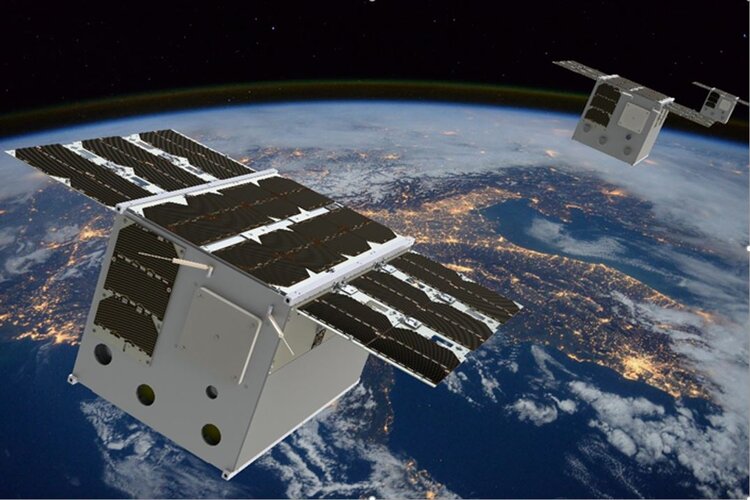
As part of its approach of embracing the concept of New Space through the FutureEO programme, ESA has selected one of four proposals as the first ‘Scout’ mission. This decision paves the way to starting negotiations with GomSpace in Denmark who will lead industrial consortium for the development of a small-satellite mission called Earth System Processes Monitored in the Atmosphere by a Constellation of CubeSats, or EPS–MACCS for short.
odborný referent v oddělení dokumentace katastru nemovitostí
3.12.2020 10:50 ČÚZK - předpisy a opatření Katastrální úřad pro Liberecký kraj - Katastrální pracoviště Semilyvypisuje výběrové řízení na místo
odborný referent v oddělení dokumentace katastru nemovitostí
odborný referent v oddělení dokumentace katastru nemovitostí
3.12.2020 10:50 ČÚZK /Urady/Katastralni-urady/Katastralni-urady/Katastralni-urad-pro-Liberecky-kraj/Uredni-deska/Oznameni-a-jina-uredni-sdeleni/Volna-mista/odborny-referent-v-oddeleni-dokumentace-katastruodborný referent v oddělení dokumentace katastru nemovitostí
3.12.2020 10:50 ČÚZK - volná místa Katastrální úřad pro Liberecký kraj - Katastrální pracoviště Semily vypisuje výběrové řízení na místo odborný referent v oddělení dokumentace katastru nemovitostíDemocratizing Access to Geospatial Technology - Interview with Sean Wiid, CEO, UP42
3.12.2020 9:00 GISCafe.com Webcasts-WebinarsMapy, analýzy a vizualizace prostorových dat v BI
3.12.2020 8:08 Katedra geoinformatiky UP OlomoucZveme vás na workshop z dílny KGI UPOL, který se zaměří na vizualizace a analýzy v Microsoft Power BI – aplikace pro tvorbu manažerských přehledů a webových aplikací, které se mohou skládat z vizuálů, jako jsou grafy, tabulky, filtry, mapy a další. Na workshopu, který proběhne formou webináře, se naučíte vytvořit dashboard s grafy a tabulkami na základě volně dostupných dat poskytovaných EU. Poté si vyzkoušíte tvorbu různých druhů map a zveřejnění dashboardu ve formě webové aplikace. Webinář se uskuteční večtvrtek […]
The post Mapy, analýzy a vizualizace prostorových dat v BI appeared first on Katedra geoinformatiky.
[Webinar Recording] The Detailed Overview and Narration for Road in Satsurv
3.12.2020 4:38 Satlab GeosolutionsIntroduction of Road in Satsurv
The post [Webinar Recording] The Detailed Overview and Narration for Road in Satsurv appeared first on Global Satellite Positioning Singapore | SatLab Geosolutions AB.
[Webinar Recording] The Detailed Overview and Narration for Road in Satsurv
3.12.2020 4:38 Satlab Geosolutions Introduction of Road in Satsurv[Webinar Recording] The Detailed Overview and Narration for Road in Satsurv
3.12.2020 4:38 Satlab Geosolutions Introduction of Road in Satsurv[Webinar Recording] The Detailed Overview and Narration for Road in Satsurv
3.12.2020 4:38 Satlab GeosolutionsIntroduction of Road in Satsurv
The post [Webinar Recording] The Detailed Overview and Narration for Road in Satsurv appeared first on Global Satellite Positioning Solutions | SatLab Geosolutions AB.
Mission Critical Partners Enhances Support to Atlanta Police Department
3.12.2020 1:02 GISCafe.com Webcasts-Webinars State College, PA, Dec. 02, 2020 (GLOBE NEWSWIRE) -- Mission Critical Partners (MCP), a leading provider of consulting, data integration, and …CYBER WEEK - Black Friday sleva 25% na software Autodesk (POSLEDNÍ DEN)
3.12.2020 1:00 CAD Studio Připojujeme se k celosvětové slevové akci "Cyber Week" (Black Friday či Cyber Monday) i s CAD softwarem firmy Autodesk. Po celý týden, do 3.12., můžete pořídit váš CAD, CAM, BIM či multimédia software o čtvrtinu levněji, tedy s dočasnou slevou 25 % ...OGC Welcomes AWS to the OGC Community as a Principal Member
3.12.2020 0:34 GISCafe.com Webcasts-Webinars AWS joins OGC as a Principal Member to help accelerate innovation by supporting OGC’s open and consensus-based process of standards …Leica BLK247 Smart 3D Surveillance System now available in two versions
3.12.2020 0:28 GISCafe.com Webcasts-Webinars Security Product of the Year Features Two Models of Its AI-enabled Sensor for Businesses, Facilities, and Private Properties(HEERBRUGG, …
Mezinárodní den půdy 5. 12. 2020
3.12.2020 0:00 Státní pozemkový úřad Praha, 3. prosince 2020 - Na sobotu 5. prosince připadá Mezinárodní den půdy, který veřejnost upozorňuje na její ohrožení lidskou činností i změnami klimatu. Půda je totiž velmi důležitou složkou životního prostředí. Není jen základem pro produkci potravin a dřeva, ale plní i řadu dalších nezbytných funkcí v krajině. I když je půda pro život na Zemi nezbytná, tak se k ní tak nechováme a dochází k jejímu postupnému znehodnocování.Mezinárodní den půdy 5. 12. 2020
3.12.2020 0:00 Státní pozemkový úřad Praha, 3. prosince 2020 - Na sobotu 5. prosince připadá Mezinárodní den půdy, který veřejnost upozorňuje na její ohrožení lidskou činností i změnami klimatu. Půda je totiž velmi důležitou složkou životního prostředí. Není jen základem pro produkci potravin a dřeva, ale plní i řadu dalších nezbytných funkcí v krajině. I když je půda pro život na Zemi nezbytná, tak se k ní tak nechováme a dochází k jejímu postupnému znehodnocování.ProStar Announces the Successful Completion of Integration With Trimble Receivers
2.12.2020 18:15 GISCafe.com Webcasts-Webinars BOULDER, Colo. — (BUSINESS WIRE) — December 2, 2020 —ProStar™, the developer of the patented precision mobile mapping software, …
Shell Deepwater Selects Bentley’s iTwin Platform for Project Delivery
2.12.2020 16:11 Bentley SystemsPress Coverage
Silicon Village, India
Read the articleDigital Twin and Cities of the Future
2.12.2020 16:04 Bentley SystemsPress Coverage
Peggy Smedley Show, USA
Read the articleCopernicus satellites keep eyes on icebergs for Vendée Globe
2.12.2020 16:00 ESA Observing the Earth
On 8 November, 33 intrepid sailors set off from Les Sables-D’Olonne in western France to take part in the most extreme, solo, non-stop, race around the world: the Vendée Globe. The route of around 45 000 km takes them down through the Atlantic and into the heart of the Southern Ocean – which is where they are heading now. Thanks to information from satellites, an ice exclusion zone has been established to help keep sailors away from icebergs. For extra safety, satellite images and data are being used to map any ice around Antarctica before the sailors pass through.
Copernicus satellites keep eyes on icebergs for Vendée Globe
2.12.2020 16:00 ESA Observing the Earth
On 8 November, 33 intrepid sailors set off from Les Sables-D’Olonne in western France to take part in the most extreme, solo, non-stop, race around the world: the Vendée Globe. The route of around 45 000 km takes them down through the Atlantic and into the heart of the Southern Ocean – which is where they are heading now. Thanks to information from satellites, an ice exclusion zone has been established to help keep sailors away from icebergs. For extra safety, satellite images and data are being used to map any ice around Antarctica before the sailors pass through.
Siemens Energy and Bentley Systems introduce asset performance management solution for oil & gas operators
2.12.2020 15:53 Bentley SystemsPress Coverage
World Oil, USA
Read the articleShell’s deepwater business selects Bentley’s digital twin platform
2.12.2020 15:43 Bentley SystemsPress Coverage
Offshore, USA
Read the articleBridging the Gap Between Design and Construction With Synchro 4D
2.12.2020 15:34 Bentley SystemsPress Coverage
ENR, USA
Read the articleOhlédnutí za Konferencí GIS Esri v ČR 2020
2.12.2020 15:23 ARCDATATak jako každý rok i letos se konalo setkání odborníků ze světa geoinformatiky, byť tentokrát výhradně virtuálně. Nový formát konference nám umožnil přivítat ještě více posluchačů než obvykle a do programu jsme díky němu mohli zařadit také několik novinek.
Hlavním tématem letošního ročníku byla digitální transformace a COVID-19 jako její možný akcelerátor. Připomeňte si, co všechno bylo během dvoudenního programu možné vidět a slyšet.
Na stránkách konference naleznete shrnutí programu jednotlivých sekcí a odborného programu včetně odkazů na záznamy z vysílání.
Bentley Systems 2020 YII: Transformation across industry
2.12.2020 15:22 Bentley SystemsPress Coverage
Hydrocarbon Processing, USA
Read the articlerada / odborný rada obnovy katastrálního operátu na Katastrálním pracovišti Chrudim
2.12.2020 13:53 ČÚZK - volná místa Katastrální úřad pro Pardubický kraj - Katastrální pracoviště Chrudim vypisuje výběrové řízení na místo rada / odborný rada obnovy katastrálního operátu na Katastrálním pracovišti Chrudimrada / odborný rada obnovy katastrálního operátu na Katastrálním pracovišti Chrudim
2.12.2020 13:53 ČÚZK - předpisy a opatření Katastrální úřad pro Pardubický kraj - Katastrální pracoviště Chrudimvypisuje výběrové řízení na místo
rada / odborný rada obnovy katastrálního operátu na Katastrálním pracovišti Chrudim
rada / odborný rada obnovy katastrálního operátu na Katastrálním pracovišti Chrudim
2.12.2020 13:53 ČÚZK /Urady/Katastralni-urady/Katastralni-urady/Katastralni-urad-pro-Pardubicky-kraj/Uredni-deska/Oznameni-a-jina-uredni-sdeleni/Volna-mista/rada-odborny-rada-obnovy-katastralniho-operatu-nRada /odborný rada v právním oddělení na Katastrálním pracovišti Brno - venkov
2.12.2020 13:50 ČÚZK /Urady/Katastralni-urady/Katastralni-urady/Katastralni-urad-pro-Jihomoravsky-kraj/Volna-mista/DMS/Rada-odborny-rada-v-pravnim-oddeleni-na-KatastralRada /odborný rada v právním oddělení na Katastrálním pracovišti Brno - venkov
2.12.2020 13:50 ČÚZK - volná místa Katastrální úřad pro Jihomoravský kraj Katastrální pracoviště Brno-venkov vypisuje výběrové řízení na místo Rada /odborný rada v právním oddělení na Katastrálním pracovišti Brno - venkovRada /odborný rada v právním oddělení na Katastrálním pracovišti Brno - venkov
2.12.2020 13:50 ČÚZK - předpisy a opatření Katastrální úřad pro Jihomoravský kraj Katastrální pracoviště Brno-venkovvypisuje výběrové řízení na místo
Rada /odborný rada v právním oddělení na Katastrálním pracovišti Brno - venkov
Mapová aplikace ÚPD - nové dokumentace
2.12.2020 13:15 Jihočeský kraj V mapové aplikaci Územně plánovací dokumentace obcí byla aktualizována ÚPD obcí ORP Strakonice – Radomyšl, ORP České Budějovice – České Budějovice, Hluboká nad Vltavou, HradceVelký úspěch Dvora Králové v soutěži Zlatý erb 2020
2.12.2020 12:19 T-MAPYThe post Velký úspěch Dvora Králové v soutěži Zlatý erb 2020 appeared first on T-MAPY spol. s r.o..
Rada/Odborný rada – Vedoucí oddělení podpory informačních a komunikačních
2.12.2020 9:55 ČÚZK - předpisy a opatření Katastrální úřad pro Karlovarský krajvypisuje výběrové řízení na místo
Rada/Odborný rada – Vedoucí oddělení podpory informačních a komunikačních
Rada/Odborný rada – Vedoucí oddělení podpory informačních a komunikačních
2.12.2020 9:55 ČÚZK - volná místa Katastrální úřad pro Karlovarský kraj vypisuje výběrové řízení na místo Rada/Odborný rada – Vedoucí oddělení podpory informačních a komunikačníchRada/Odborný rada – Vedoucí oddělení podpory informačních a komunikačních
2.12.2020 9:55 ČÚZK /Urady/Katastralni-urady/Katastralni-urady/Katastralni-urad-pro-Karlovarsky-kraj/Uredni-deska/Oznameni-a-jina-uredni-sdeleni/Volna-mista/DMS/Rada-Odborny-rada-–-Vedouci-oddeleni-podpory-inforWarehouse of the future - Interview with Ian Smith, CEO, Ware
2.12.2020 9:00 GISCafe.com Webcasts-WebinarsRevoluce ve sdílení dat od policie, aneb nová aplikace Mapa kriminality pro veřejnost
2.12.2020 8:49 GISportal.cz
O sdílení dat o registrované kriminalitě volali mnozí akademici i praktici již mnoho let. Zatím “nejlepším” zdrojem dat byla webová stránka MapaKriminality.cz, kde byla však data do podrobnosti maximálně obvodních oddělení, tedy například na stotisícové město (Olomouc) to byly čtyři oddělení. Data jsou zde prezentována relativně podrobně dle kategorií trestných činů a to každý měsíc. […]
The post Revoluce ve sdílení dat od policie, aneb nová aplikace Mapa kriminality pro veřejnost appeared first on GISportal.cz.
Aliance pořádala webinář ke změnám pro profesionální provozovatele s ÚCL a Ministerstvem dopravy
2.12.2020 7:45 UAVAMinulý týden Aliance pořádala pro členy speciální webinář se zaměřením na změny v provozu dronů od 31.12.2020 pro profesionály se zástupci ÚCL a Ministerstva dopravy včetně možnosti pokládat dotazy. Tento exkluzivní webinář přinesl spoustu důležitých informaci, které chceme sdílet se všemi provozovateli. Dozvíte se například, že i profesionálové musí mít od 31.12.2020 registraci v novém […]
The post Aliance pořádala webinář ke změnám pro profesionální provozovatele s ÚCL a Ministerstvem dopravy appeared first on UAV Aliance pro bezpilotní letecký průmysl.
ÚCL SPOUŠTÍ ONLINE REGISTRACI PROVOZOVATELŮ DRONŮ OD 4.12.2020
2.12.2020 7:15 UAVAÚřad pro civilní letectví dnes spustil novou webovou stránku https://dron.caa.cz/ s dalšími informacemi o nových pravidlech provozu dronů od 31.12.2020 a na kterém bude spuštěna registrace provozovatelů a online testy již tento pátek 4.12.2020! Více informací lze nalézt zde: https://www.caa.cz/news/zakladni-informace-ke-zmenam-v-regulaci-dronu-od-31-12-2020/
The post ÚCL SPOUŠTÍ ONLINE REGISTRACI PROVOZOVATELŮ DRONŮ OD 4.12.2020 appeared first on UAV Aliance pro bezpilotní letecký průmysl.
HPE Reports Fiscal 2020 Fourth Quarter
2.12.2020 1:37 GISCafe.com Webcasts-Webinars Strong rebound in revenue; raising FY21 EPS outlookQ4 2020 Financial Highlights:
Revenue: returned to pre-pandemic levels of $7.2 billion, up 6% …
Cities and Regions of the EU’s UAM Initiative present the ‘Manifesto on the Multilevel Governance of the Urban Sky’
2.12.2020 1:30 GISCafe.com Webcasts-Webinars AMSTERDAM, 1 December 2020 - At the first day of the online conference ADW Hybrid, a first batch of fourteen European cities and regions, members of …USGIF High School Industry Geospatial-Intelligence Credentialing added to Missouri’s High School Industry Recognized Credential List
2.12.2020 1:27 GISCafe.com Webcasts-Webinars Missouri high school districts can choose, independently, to give high school credits to students who take and pass AYBAA and USGIF’s …ERIS and GeoSearch Unite, Raising the Standard of Environmental Property Due Diligence in North America
1.12.2020 22:42 GISCafe.com Webcasts-Webinars Combining Strengths in Environmental Risk Data, Historical Information, and Leading TechnologiesAUSTIN, Texas & TORONTO — (BUSINESS WIRE) …
Esri Joins GEOBIM 2020 Conference
1.12.2020 22:41 GISCafe.com Webcasts-Webinars Esri Experts to Demonstrate How Architects, Engineers, and Construction Professionals Improve BIM Processes with Location IntelligenceREDLANDS, …
National Geospatial-Intelligence Agency (NGA) selects Intermap Director Jack Hild for induction into the Geospatial Intelligence (GEOINT) Hall of Fame
1.12.2020 20:49 GISCafe.com Webcasts-Webinars DENVER, Dec. 1, 2020 — (PRNewswire) — Intermap Technologies Corporation ("Intermap" or the "Company"), a global leader in …Supply Side: CN Signs Contract with Duos, Bentley Launches Virtuosity
1.12.2020 18:38 Bentley SystemsPress Coverage
Railway Age, USA
Read the articleDigital Twins and Smart City Impact on Design, Build, and Manage
1.12.2020 18:35 Bentley SystemsPress Coverage
AECbytes, USA
Read the articleThe Digital Transformation Journey Continues at ARC India's Virtual Forum (Part 2)
1.12.2020 18:31 Bentley SystemsPress Coverage
ARC Advisory Group, USA
Read the articleMicrosoft CEO Satya Nadella — Featured Speaker at Bentley YII2020
1.12.2020 18:25 Bentley SystemsPress Coverage
Architosh, USA
Read the articleAccessing Information
1.12.2020 18:19 Bentley SystemsPress Coverage
Construction Today, UK
Read the articleBentley Systems Announces Finalists in the Year in Infrastructure 2020 Awards Program
1.12.2020 18:14 Bentley SystemsPress Coverage
GeoConnexion, UK
Read the articleA-68A on the move
1.12.2020 17:00 ESA Observing the Earth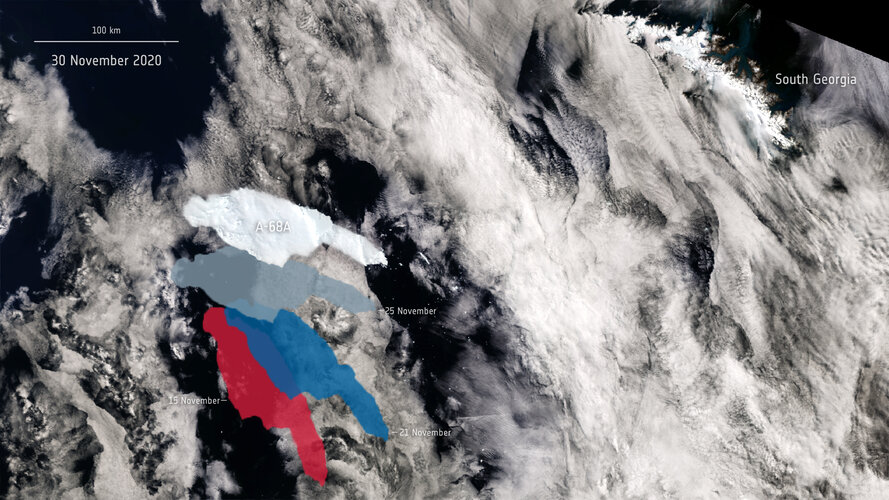 Image:
All eyes remain on the giant A-68A iceberg on its journey across the Southern Ocean. This image shows A-68A’s movements over the past 15 days using data from the Copernicus Sentinel-1 and Sentinel-3 missions.
Image:
All eyes remain on the giant A-68A iceberg on its journey across the Southern Ocean. This image shows A-68A’s movements over the past 15 days using data from the Copernicus Sentinel-1 and Sentinel-3 missions.
Geodesign as a “coordinator” for planning projects - Interview with Jesse Suders, Community and Economic Development Manager, Dawood Engineering
1.12.2020 16:09 GISCafe.com Webcasts-WebinarsBlackSky Names Uyen Dinh as Vice President for Government Relations and Strategy
1.12.2020 15:57 GISCafe.com Webcasts-Webinars HERNDON, Va. — (BUSINESS WIRE) — December 1, 2020 —BlackSky, a leading provider of global monitoring services and geospatial …
Utilis Inc. certified with Esri Release Ready Specialty
1.12.2020 15:57 GISCafe.com Webcasts-Webinars Utilis Inc. plans to follow-up by becoming certified to sell their solutions on the Esri MarketplaceSAN DIEGO, Dec. 1, 2020 — (PRNewswire) …
Gaining Momentum: Annual U.S. Home Prices Appreciated 7.3% in October, CoreLogic Reports
1.12.2020 15:57 GISCafe.com Webcasts-Webinars U.S. Home Price Index experienced the fastest annual acceleration since April 2014HPI Forecast predicts home price growth will slow through …
Velodyne Lidar Announces Autonomous Driving Collaboration with Ford Otosan
1.12.2020 15:57 GISCafe.com Webcasts-Webinars Companies Working Together on Autonomous Driving Development and Testing for Heavy Commercial VehiclesSAN JOSE, Calif. — (BUSINESS WIRE) …
20201201 - sběrný box
1.12.2020 10:59 ČÚZK - předpisy a opatření Katastrální úřad pro Ústecký kraj - Katastrální pracoviště Děčín zveřejnil novou aktualitu: Upozorňujeme na možnost učinit podání bezkontaktně do schránky umístěné ve vstupní hale budovy! Lze tak podat i návrh na vklad v zalepené obálce. Uveďte v podání Váš mail, budeme Vás informovat o přijetí, případně vyzveme k zaplacení poplatku převodem na účet. Schránka je přístupná v pondělí a středu od 8:00 do 17:00, v úterý a čtvrtek od 8:00 do 14:00 a v pátek od 8:00 do 12:00.20201201 - sběrný box
1.12.2020 10:59 ČÚZK /Urady/Katastralni-urady/Katastralni-urady/Katastralni-urad-pro-Ustecky-kraj/Katastralni-pracoviste/KP-Decin/O-uradu/Aktuality/20201030-zmena-urednich-hodin-od-2-11-2020-(1)Prosincové online BIM akce CAD Studia
1.12.2020 1:00 CAD Studio V prosincovém kalendáři online akcí CAD Studia nyní najdete sérii specializovaných online školení a webinářů zaměřených na různé profese z oblasti BIM projektování pozemních a inženýrských staveb. Díky těmto krátkým online akcím můžete snadno zvýšit ...Nová verze CS+ nadstavby CADstudio Fusion Tools
1.12.2020 1:00 CAD Studio Byla uvolněna nová verze bonus nadstavby Fusion Tools 1.0 (F-Tools), která dále rozšiřuje funkce populární CAD/CAM/CAE/EDA aplikace Autodesk Fusion 360 ve verzi pro Windows.
Tento bonus doplněk nainstalujete nebo zaktualizujete snadno pomocí ...
Byla uvolněna nová verze bonus nadstavby Fusion Tools 1.0 (F-Tools), která dále rozšiřuje funkce populární CAD/CAM/CAE/EDA aplikace Autodesk Fusion 360 ve verzi pro Windows.
Tento bonus doplněk nainstalujete nebo zaktualizujete snadno pomocí ...INDUS.AI launches new Autodesk BIM 360 integration to improve construction project productivity and safety
1.12.2020 0:51 GISCafe.com Webcasts-Webinars Construction teams can now easily monitor project performance, progress and safety in real-timeSAN FRANCISCO, Nov. 30, 2020 — (PRNewswire) …
Státní pozemkový úřad zahájil 14. ročník soutěže Žít krajinou
1.12.2020 0:00 Státní pozemkový úřad Praha, 1. prosince 2020 – Soutěž zaměřenou na komplexní pozemkové úpravy pořádá Státní pozemkový úřad (SPÚ) ve spolupráci s Českomoravskou komorou pro pozemkové úpravy (ČMKPÚ) již od roku 2006. Krajské pobočky SPÚ, projektanti, stavitelé nebo obce či vlastníci realizované stavby mohou své projekty přihlásit do 31. ledna 2021. Soutěž podporuje projekty, které svým charakterem splňují požadavky na celkové řešení krajiny nebo její části. Přihlásit lze takové projekty, které byly dokončeny nejpozději 31. prosince 2019.Pozvánka na přednášku
1.12.2020 0:00 Geografický ústav MUDovolujeme si Vás jménem Institutu Cervantes v Praze pozvat na přednášku věnovanou první cestě kolem světa, kterou uskutečnili mořeplavci Magalhães a Elcano a jejíž 500. výročí si tímto připomínáme. Přednáška se bude konat online, a to v úterý 1. prosince od 18:00 na následujícím odkazu: https://zoom.us/j/93219549496?pwd=enJkR1MzaU9JVUxZVk9aTjhpZklUUT09#success.
Se svými příspěvky vystoupí historikové Susana García Ramírez (vedoucí oddělení Výzkumu a sbírek španělského Námořního muzea a kurátorka výroční výstavy), profesor Josef Opatrný z Univerzity Karlovy a docent Jiří Chalupa z Ostravské univerzity.
Přednáška bude ve španělském jazyce se simultánním tlumočením do češtiny.
Státní pozemkový úřad zahájil 14. ročník soutěže Žít krajinou
1.12.2020 0:00 Státní pozemkový úřad Praha, 1. prosince 2020 – Soutěž zaměřenou na komplexní pozemkové úpravy pořádá Státní pozemkový úřad (SPÚ) ve spolupráci s Českomoravskou komorou pro pozemkové úpravy (ČMKPÚ) již od roku 2006. Krajské pobočky SPÚ, projektanti, stavitelé nebo obce či vlastníci realizované stavby mohou své projekty přihlásit do 31. ledna 2021. Soutěž podporuje projekty, které svým charakterem splňují požadavky na celkové řešení krajiny nebo její části. Přihlásit lze takové projekty, které byly dokončeny nejpozději 31. prosince 2019.Atkins establishes a detailed GIS using innovative technology
30.11.2020 20:25 Bentley SystemsPress Coverage
Construction Week Online, India
Read the articleVláda schválila navýšení rozpočtu ministerstva zemědělství, dostane o tři miliardy korun více. Část půjde na pozemkové úpravy
30.11.2020 20:25 ZeměměřičO tři miliardy korun navíc bude mít letos Ministerstvo zemědělství (MZe) na programy vodního hospodářství proti suchu a pozemkové úpravy. Navýšení rozpočtu dnes na jeho žádost schválila vláda. Na programy vodního hospodářství získalo MZe 1,7 miliardy korun, na pozemkové úpravy 1,3 miliardy korun. Peníze půjdou například na obnovu a výstavbu rybníků a malých vodních nádrží, závlahy, propojování vodárenských […]
The post Vláda schválila navýšení rozpočtu ministerstva zemědělství, dostane o tři miliardy korun více. Část půjde na pozemkové úpravy appeared first on Zeměměřič.
Vláda schválila navýšení rozpočtu ministerstva zemědělství, dostane o tři miliardy korun více. Část půjde na pozemkové úpravy
30.11.2020 20:25 ZeměměřičO tři miliardy korun navíc bude mít letos Ministerstvo zemědělství (MZe) na programy vodního hospodářství proti suchu a pozemkové úpravy. Navýšení rozpočtu dnes na jeho žádost schválila vláda. Na programy vodního hospodářství získalo MZe 1,7 miliardy korun, na pozemkové úpravy 1,3 miliardy korun. Peníze půjdou například na obnovu a výstavbu rybníků a malých vodních nádrží, závlahy, propojování vodárenských […]
The post Vláda schválila navýšení rozpočtu ministerstva zemědělství, dostane o tři miliardy korun více. Část půjde na pozemkové úpravy appeared first on Zeměměřič.
Simulating Spaces for Social Distancing
30.11.2020 20:12 Bentley SystemsPress Coverage
Informed Infrastructure, USA
Read the article


